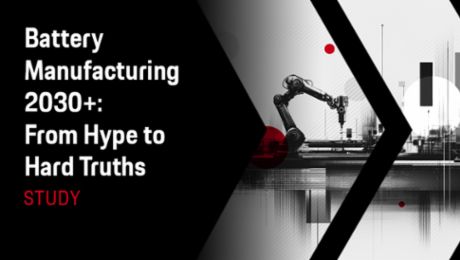Online banks in Germany are clearly providing something very close to the service their customers desire: 80 percent of people with online checking accounts are satisfied with their banks. By comparison, only 44 to 58 percent of those with checking accounts at brick-and-mortar institutions give similar unreservedly positive assessments. A new study from the Porsche Consulting management consultancy reveals what customers are especially interested in. Their main criterion is the absence or low level of fees, according to 65 percent of the 1,041 respondents aged 25 to 65 in the survey commissioned by Porsche Consulting and carried out by the Forsa market research institute.
Many banks offer financial bonuses to attract new customers. A sum of 50 to 500 euros can await those willing to switch their checking accounts to a new financial institution. However, only one in five respondents would agree to switch their account for less than 500 euros. When they do switch, the reasons are predominately practical in nature. The two major motives are the density of automatic tellers (83 percent) and user-friendly online banking (74 percent). In fact, 88 percent of younger clients aged 25 to 39 devote especially close attention to the quality of online banking. Only 61 percent of those aged 55 to 65 find online accounts relevant.
Willingness to switch
The 25–39 age group shows a greater willingness to switch than the older group, at 12 percent compared to 6 percent. Another striking result is that the willingness to switch increases with household income. Generally speaking, however, account holders are reluctant to do so. Approximately nine out of ten customers (84 percent) have held the same account for more than ten years, and nearly half (49 percent) have been at the same institution for 20 or more years.
The survey also examined whether the major motives of long-term customers are a matter of loyalty or inertia. Slightly more than half (55 percent) of non-switchers assume that there are hardly any differences among banks. Forty percent are put off by the consequences of a switch: new account numbers, plus the associated need to change direct debit authorizations and inform employers, landlords, fiscal authorities, or suppliers – even though banks usually handle these bureaucratic tasks for their customers free of charge. But the most important factor consists of geographical proximity. Two-thirds (66 percent) of non-switchers remain with their banks because the closest branch office is located not far from where they live. And 31 percent follow tradition and keep their accounts at the same institutions as other family members who are long-term customers.
Digitization in monetary transactions
It would therefore appear that financial institutions hardly need to fear an exodus of private customers. Even the cash incentives from competitors manage to sway only a relatively small number. Yet this is deceptive. “The rapid rise of digitization in monetary transactions in general will intensify the competition for bank customers,” says Dr. Matthias Tewes, an expert in financial services and a partner at Porsche Consulting. “Our survey shows that it is precisely the young clients who respond much more flexibly to highly attractive offers from other banks. Their decisions are based on considerations like transparency and the convenience of online banking. They are interested not only in free accounts but also in the best customer service.”
Tewes is convinced that many traditional financial institutions have not yet adapted their organizational structures sufficiently to the new type of customer who will dominate the sector in the future. “The banks are being pulled in two directions,” he says. “They have been hit by previously unimaginable cost pressures. But they will only beat the competition if they invest in better-quality services. The business models of the future will not only change the requirements for personnel and the need for cutting-edge technologies. In particular, they will also demand the ability to respond extremely quickly to change – which is nearly impossible with the structures still in place today.”
Survey
To collect the data on checking account holders, a total of 1,041 persons aged 25 to 65 living in private German households were surveyed in February of 2016. They were chosen by systematic random selection (multi-stage stratified random sampling).
Porsche Consulting GmbH
Headquartered in Bietigheim-Bissingen, Porsche Consulting GmbH is a subsidiary of the Stuttgart-based sports car manufacturer Dr. Ing. h.c. F. Porsche AG. Founded in 1994 with a staff of four, it currently employs more than 380 people. An internationally active company with four subsidiaries of its own in Milan, São Paulo, Atlanta, and Shanghai, it is one of Germany’s leading management consultancies. Its experts in operational excellence advise large corporations and medium-sized companies worldwide in the automotive, aviation and aerospace, and mechanical and plant engineering industries. Clients also come from the financial services, consumer goods, retail, and construction sectors.




